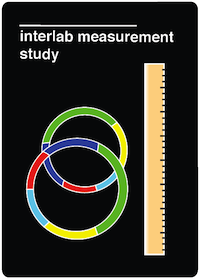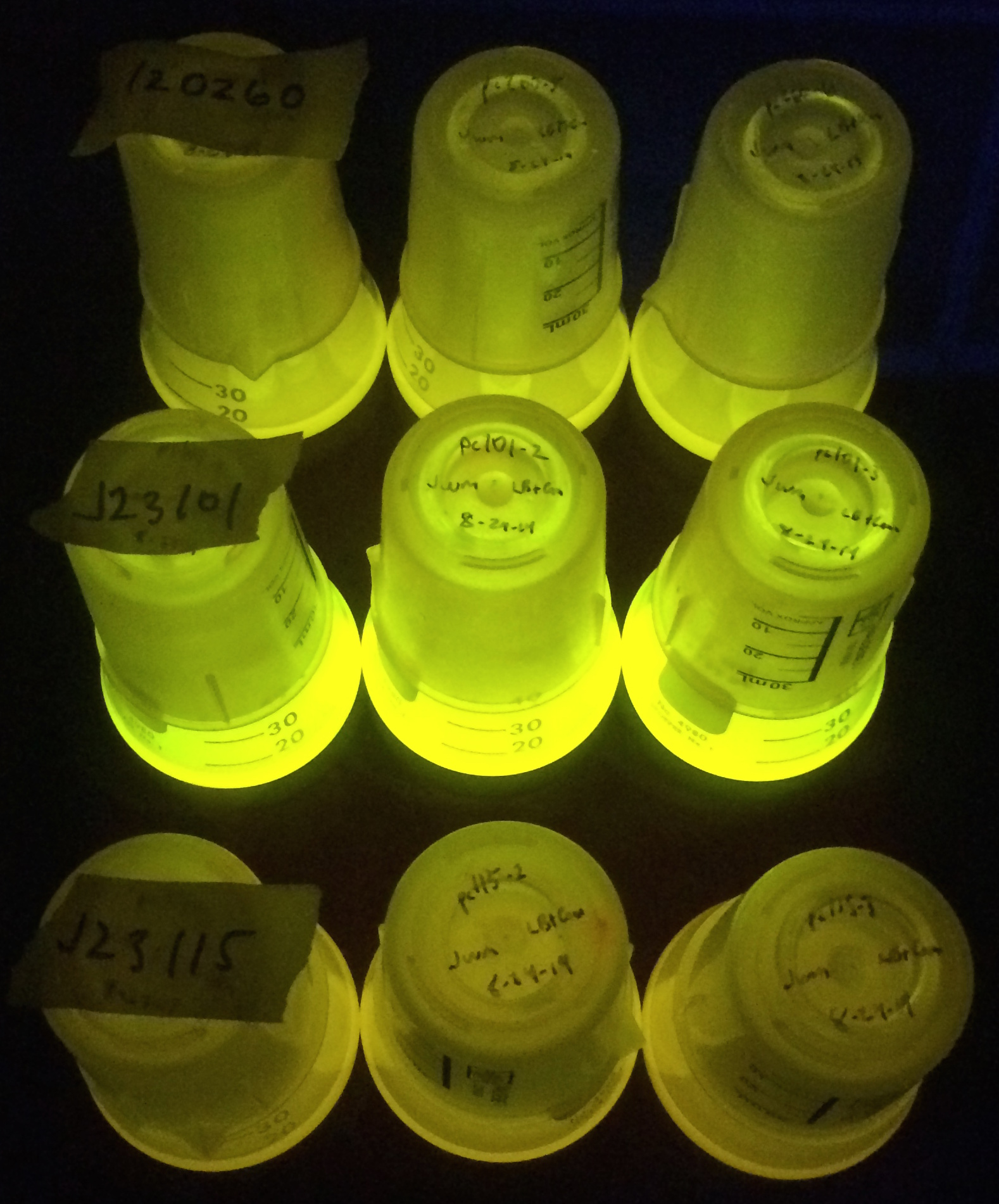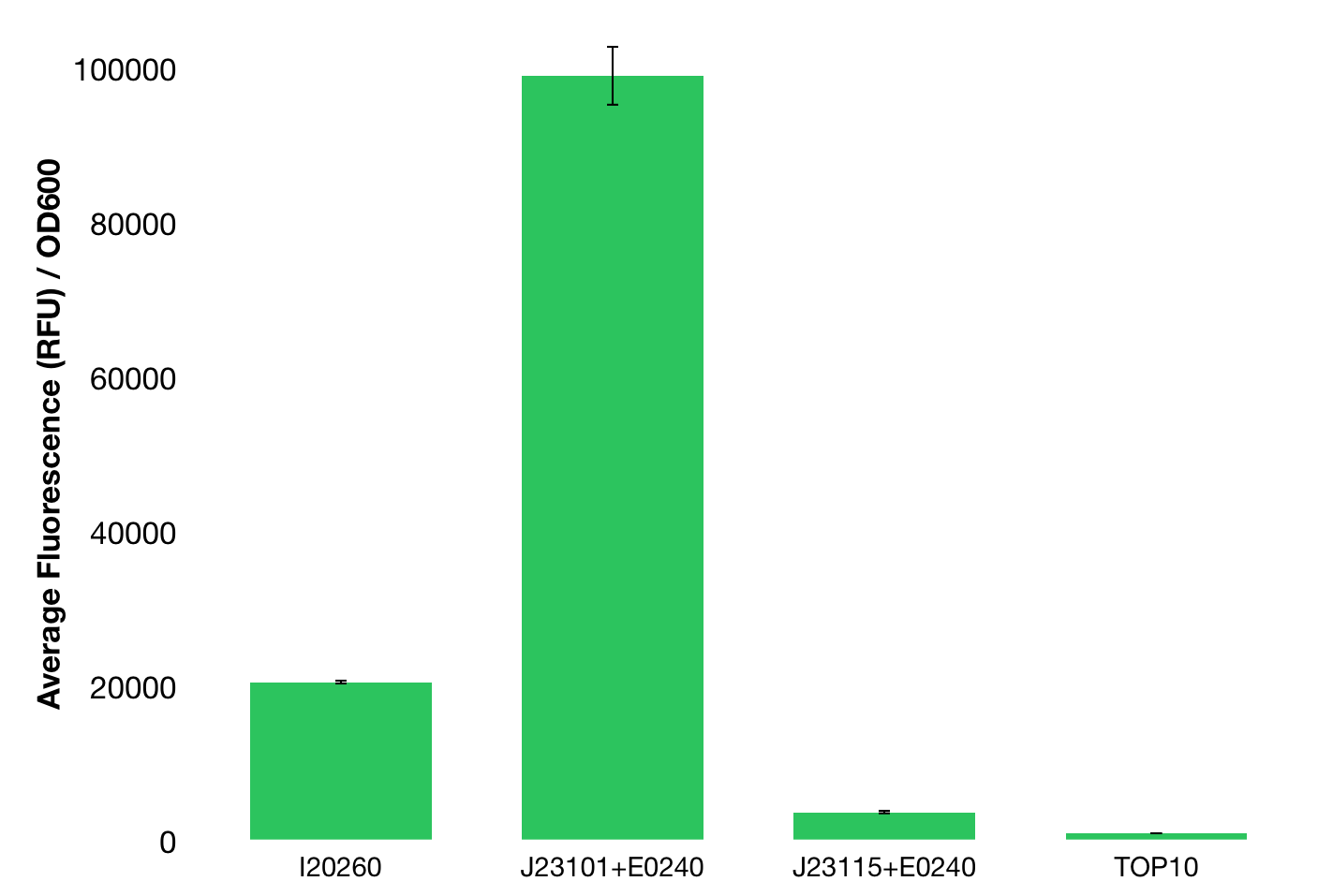Team:Austin Texas/interlab study
From 2014.igem.org
Jordanmonk (Talk | contribs) |
Jordanmonk (Talk | contribs) m |
||
| Line 81: | Line 81: | ||
<h1>Interlab Study</h1> | <h1>Interlab Study</h1> | ||
<div align="justify"> | <div align="justify"> | ||
| - | The interlab study is a new feature of iGEM this year. As part of the measurement track, we participated in the interlab study as described on the [https://2014.igem.org/Tracks/Measurement/Interlab_study Interlab Study page]. The purpose of this study was to measure the fluorescence of three different devices, two of which we constructed in lab from | + | The interlab study is a new feature of iGEM this year. As part of the measurement track, we participated in the interlab study as described on the [https://2014.igem.org/Tracks/Measurement/Interlab_study Interlab Study page]. The purpose of this study was to measure the fluorescence of three different devices, two of which we constructed in lab from BioBrick parts. The third device was simply a plasmid included in the 2014 parts kit. Below, we detail our Interlab Study experience and discuss what our findings could mean. |
<h1>Devices Measured</h1> | <h1>Devices Measured</h1> | ||
| Line 147: | Line 147: | ||
If this is not the case, then we would consider the possibility that the medium copy plasmid pSB3K3, while lower copy number than pSB1C3, may be a better expression platform for this protein. One can also compare the relative qualitative fluorescence of the cultures visually ('''Figure 1''') by looking at the top two rows of flasks: the top row being BBa_I20260 in pSB1C3 and the middle row being the same construct (BBa_J23101+E0240) in pSB3K3. | If this is not the case, then we would consider the possibility that the medium copy plasmid pSB3K3, while lower copy number than pSB1C3, may be a better expression platform for this protein. One can also compare the relative qualitative fluorescence of the cultures visually ('''Figure 1''') by looking at the top two rows of flasks: the top row being BBa_I20260 in pSB1C3 and the middle row being the same construct (BBa_J23101+E0240) in pSB3K3. | ||
| - | In comparing constructs #1 and #3 (with the same coding sequence and plasmid backbone but different promoters), it should be noted that the sequence of promoter J23115 (device #3) differed by two bases from the reference sequence in the registry. While the sequence we used is consistent with the Spring 2014 Kit Distribution sequence analysis performed by the | + | In comparing constructs #1 and #3 (with the same coding sequence and plasmid backbone but different promoters), it should be noted that the sequence of promoter J23115 (device #3) differed by two bases from the reference sequence in the registry. While the sequence we used is consistent with the Spring 2014 Kit Distribution sequence analysis performed by the BioBricks Foundation, it is likely that this mutated promoter may have a different activity than the reference sequence. We observed that J23101 (device #1) shows a several-fold stronger signal than our mutated promoter J23115. While the [http://parts.igem.org/Promoters/Catalog/Anderson measured relative fluorescence data] of the reference sequences generally agree with our data, the mutated J23115 shows slightly less activity compared to the reference data. The relative qualitative fluorescence of the cultures can be compared visually ('''Figure 1''') by looking at the top and bottom rows: the top row using promoter J23101 and the bottom row using mutated promoter J23115, both in pSB1C3. |
</div> | </div> | ||
<!-- WIKI CONTENT ENDS --> | <!-- WIKI CONTENT ENDS --> | ||
Revision as of 03:18, 18 October 2014
| |||||||||||||||||||||||||||||
 "
"



